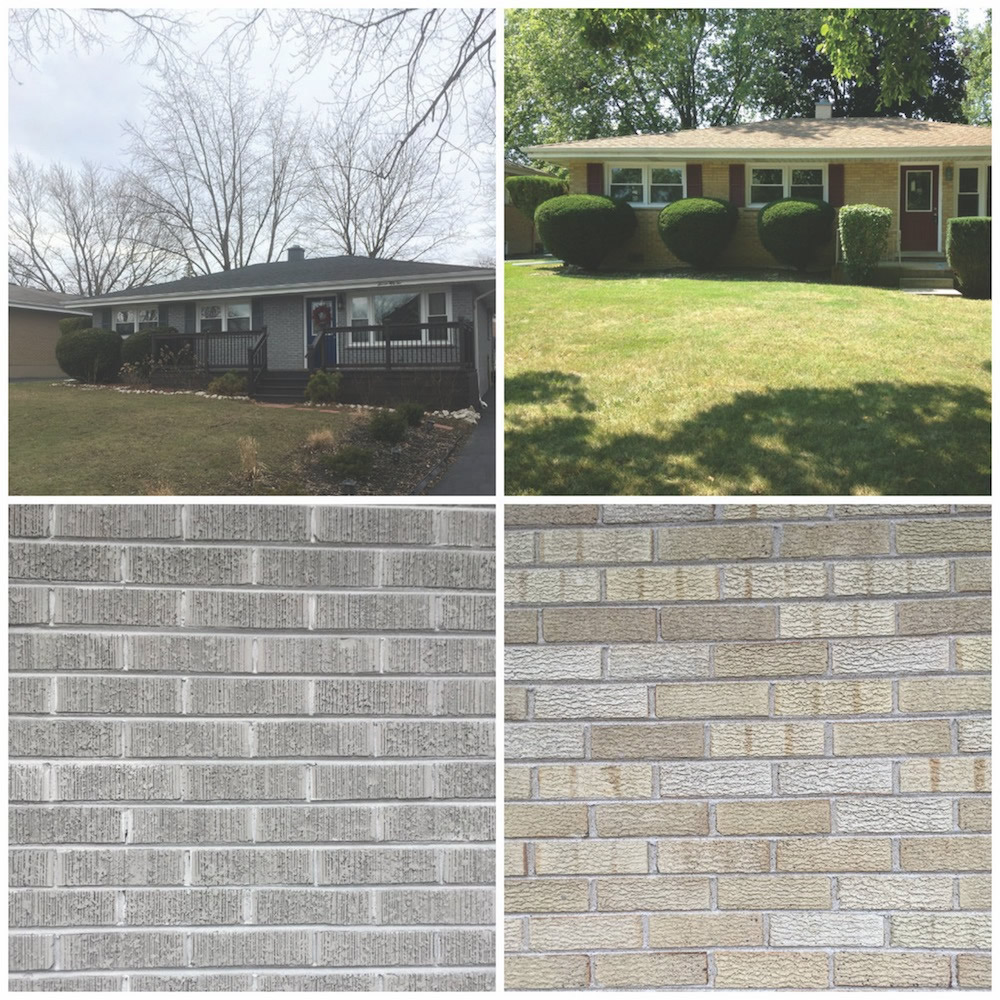Words and Photos: Matt Plechan- Mineral Stains
In a world today filled with tons of paints found in hardware stores, also online, most people overlook this wonderful technology that has been around since the 1800’s! With the addition of latex, acrylic and oil paints, silicate paints lost some luster and took a back seat to much easier to apply paints that were also backed by more marketing in the mid-1900s.
Over time, many buildings have seen consequences of these standard paints, which resulted in chipping, peeling, bubbling, and cracks, which resulted in the slow demise of the actual substrate of the building(s). Today, some cities near Chicago are starting to prevent buildings from applying traditional paint on exterior brick/stone, for this reason.
A story about the history of Mineral Paints/Stains is worth sharing, as this technology is getting more popular with architects, builders, and even homeowners.
The reign of King Ludwig I of Bavaria was a time of intensive research into water glass (potassium silicate). The king loved the colorful lime frescoes in North Italy and longed to enjoy the typically splendid colors produced by lime paints in his own kingdom. But the harsh German climate was not suitable for the technique used in Italy.
Eventually, a skilled chemist and researcher succeeded in mixing liquid water glass and mineral color pigments to create a paint that could withstand the climate north of the Alps while at the same time offering brilliant colors. The paint’s durability results from the chemical bond formed by the binding agent with the substrate (silicification).Today, manufacturing is still governed by German Industrial Standards, known as (DIN 18 363).

Potassium silicate has been known since the Middle Ages when it was termed Liquor Silicium. In 1768, Johann Wolfgang von Goethe had great hopes for his initial experiments with water glass. In the 8th book of “Facts and Fiction” he wrote: “What most occupied my spirit for a long while was the so-called Liquor Silicium which is obtained if pure quartz sand is melted with an adequate proportion of alkali, giving rise to a transparent glass which melts in air yielding a beautiful clear liquid. Without adequate production and technology, this technique would not be mastered until the late 1800s.
Proven Track Record:
There are buildings in Europe that have been stained/painted with mineral based products over 100 years ago and are still in good condition. Buildings such as the White House, Buckingham Palace, Sydney Opera House, and the Bolshoi Theatre are painted with potassium silicate stains/paints. Mineral silicate paint coats are considered durable and weather resistant. Lifetimes exceeding a hundred years are possible! The city hall in Schwyz and “Gasthaus WeiBer Adler” in Stein am Rhein (both in Switzerland) received their coats of mineral paint in 1891, and facades in Oslo from 1895 or in Traunstein, Germany from 1891.
Mineral paint contains inorganic colorants, and potassium-based, alkali silicate (water glass) also known as potassium silicate, liquid potassium silicate, or LIQVOR SILICIVM. A coat with mineral colors does not form a layer but instead permanently bonds to the substrate material (silicification).
Silicification
Silicification is the process in which organic matter becomes saturated with silica. Water must be present for silicification to occur because it reduces the amount of oxygen present and therefore reduces the deterioration of the organism by fungi, maintains organism shape, and allows for the transportation and deposition of silica. The process begins when a specimen is permeated with an aqueous silica solution.
The cell walls of the specimen are progressively dissolved and silica is deposited into the empty spaces. The specimen is transformed into stone (a process called lithification) as water is lost. For silicification to occur, the geothermic conditions must include a neutral to slightly acidic pH and a temperature and pressure similar to shallow-depth sedimentary environments.
The result is a highly durable connection between paint coat and substrate. The water glass binding agent is highly resistant to UV light. While dispersions based on acrylate or silicone resin over the years tend to grow brittle, chalky and crack under UV, the inorganic binder water glass remains stable. The chemical fusion with the substrate and the UV stability of the binder are the fundamental reasons for the extraordinarily high lifetime of silicate paints.
Silicate paints require a siliceous substrate for the setting. For this reason, they are highly suitable for mineral substrates such as mineral plasters and concrete. The permeability to water vapor of silicate paints is equivalent to that of the substrate, so silicate paints do not inhibit the diffusion of water vapor. Moisture contained in parts of a structure or in the plaster may diffuse outward without resistance: this keeps walls dry and prevents structural damage.
This addition helps avoid condensation of water on the surface of building materials, reducing the risk of infestation by algae and fungi. The high alkalinity of the water glass binding agent adds to the inhibitory effect against infestation by microorganisms and completely eliminates the need for additional preservatives.

As mineral paint coats are not prone to static charging and thermo-plasticity (stickiness developing under heat), which is common for surfaces coated with dispersion or silicone resin, soiling happens less, so fewer dirt particles cling to the surface and are easier to wash off.[3] Silicate paints are incombustible and free of organic additives or solvents. Silicate paints are highly color-tone stable. As they are solely colored with mineral pigments that do not fade with exposure to UV radiation, the silicate paint coats remain constant in color for decades.
Silicate paints are based on mineral raw materials. They are environmentally compatible with manufacture and effect. Their high durability helps to preserve resources and their contaminant- free composition preserves health and environment. For this reason, silicate paints have gained popularity, especially in sustainable construction.
